This site contains affiliate links to products, and we may receive a commission for purchases made through these links.
What dimension would VR be considered? This thought-provoking query is the focus of numerous talks about virtual reality (VR) and its effects on our outlook. In this blog post, we will explore the concept of dimensions in relation to VR experiences and how they are used to create immersive environments.
We’ll begin by exploring what exactly virtual reality is, followed by a discussion on which dimension it represents in relation to our real-world understanding. Furthermore, we will examine how VR headsets create immersive environments that transport users into these virtual worlds.
Additionally, we will touch upon the benefits and challenges of using this groundbreaking technology.
By delving into these topics, you’ll gain a better grasp on what dimension would VR be considered and develop an appreciation for its potential applications in gaming, exploration, education, and beyond.
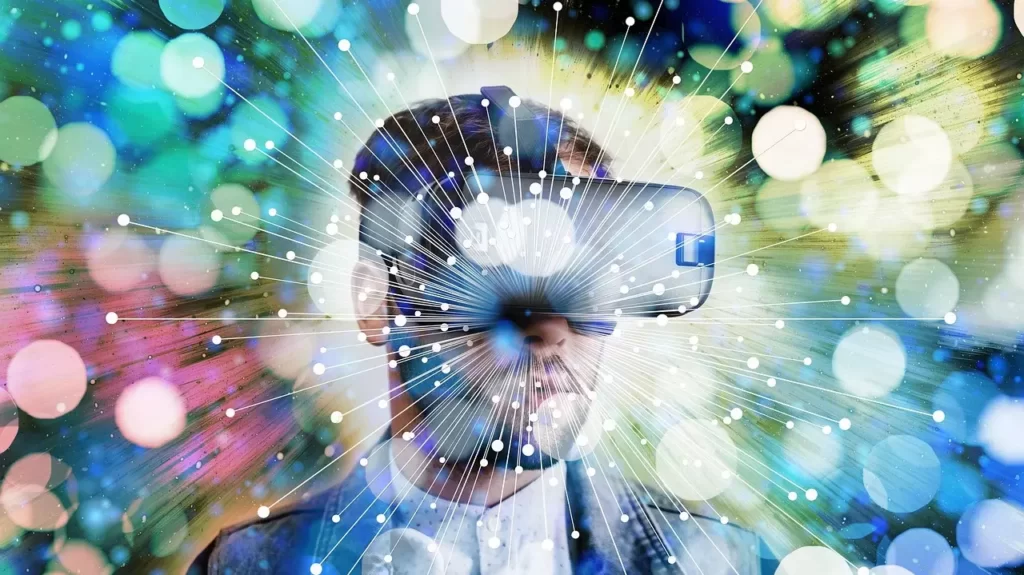
What is Virtual Reality?
Virtual reality (VR) is a fascinating technology that allows users to experience immersive, interactive environments by simulating the real world or creating entirely new ones. Unlike traditional forms of media, such as television and video games, VR places users directly inside these digital worlds, making them feel like they are truly part of the action.
A Brief History of Virtual Reality
For years, the idea of virtual reality has been present but gained traction in recent times due to tech advances. In the 1960s, Ivan Sutherland and Bob Sproull developed one of the first head-mounted displays (HMD), which laid the foundation for modern VR systems.
Since then, numerous companies have invested time and resources into refining this groundbreaking technology.
Difference Between Augmented Reality and Virtual Reality
Whereas AR integrates digital elements into our physical environment, VR completely replaces the real world with a simulated one. AR overlays digital elements onto our physical surroundings using devices like smartphones or specialized glasses (Magic Leap One).
On the other hand, VR completely replaces our view with an entirely simulated environment through HMDs like Oculus Quest 2.
- Augmented Reality: Enhances real-world environments with digital content.
- Virtual Reality: Completely immerses users within a simulated environment.
Types of Virtual Reality Systems
Different kinds of VR systems are obtainable nowadays, tailored to various needs and inclinations. Some common categories include:
- Tethered VR Headsets: These devices require a connection to a powerful computer or gaming console for processing power. Examples include the PlayStation VR and HTC Vive.
- Standalone VR Headsets: As the name suggests, these headsets do not need external hardware as they have built-in processors. The Oculus Quest 2 is an example of this type.
- Mobile VR Headsets: These headsets use smartphones as their display and processor, making them more affordable but with limited capabilities compared to other options. Google Cardboard is one such mobile headset.
What Dimension Would VR be Considered?
Virtual reality can be considered a three-dimensional (3D) environment that simulates the real world or creates entirely new ones. It allows users to interact with objects and environments in a way that feels natural and intuitive, making it a popular choice for gaming, education, and training.
How Does Virtual Reality Work?
Virtual reality works by using specialized hardware and software to create a simulated environment that responds to user input.
This input can come from a variety of sources, including hand-held controllers, body movements, and even eye-tracking technology.
The hardware used in VR systems, such as HMDs and sensors, track the user’s movements and adjust the simulated environment accordingly, creating a seamless and immersive experience.
Benefits of Virtual Reality
Virtual reality has numerous benefits, including:
- Enhanced learning experiences through interactive simulations
- Improved training for high-risk jobs, such as military and medical professions
- Increased accessibility for people with disabilities or limited mobility
- Opportunities for remote collaboration and communication
- Entertainment and gaming experiences that are more immersive and interactive than traditional media
Challenges Associated with Virtual Reality
While virtual reality has many benefits, there are also challenges associated with its use, including:
- High costs for hardware and software development
- Technical limitations, such as limited field of view and resolution
- Potential health risks, such as motion sickness and eye strain
- Privacy concerns related to data collection and tracking
- Difficulty in creating realistic and believable simulations
VR holds the potential to profoundly alter our perception and connection with reality. By exploring what dimension VR represents, we can gain further insight into its true capabilities and limitations.
Virtual reality (VR) is a technology that immerses users in simulated environments, with various types of VR systems available such as tethered, standalone and mobile headsets. It offers benefits like enhanced learning experiences and improved training for high-risk jobs but also has challenges including high costs, technical limitations and potential health risks.
What Dimension Does VR Represent?
VR offers an immersive experience that enables users to interact with digital worlds and objects. VR can provide users with an immersive experience through its representation of various dimensions, such as 3D, 4D and 5D.
In this section, we will explore the various dimensions that virtual reality can represent, including 3D, 4D, and even 5D.
Three-Dimensional (3D) Virtual Reality
The most common dimension represented in VR experiences is three-dimensional (3D). This involves creating a digital environment where objects have depth and appear as they would in real life.
Users can move around within these environments and view them from different angles using headsets or other devices equipped with motion-tracking sensors.
- Stereoscopic Display: A key component of 3D VR experiences is stereoscopic display technology, which presents slightly different images for each eye to create an illusion of depth.
- Motion Tracking: To ensure realistic movement within the virtual world, motion tracking systems detect changes in position and orientation so that users’ actions are accurately reflected on screen.
Four-Dimensional (4D) Virtual Reality
Beyond three-dimensional representation lies four-dimensional (4D) virtual reality. In addition to spatial elements found in 3D experiences, 4D introduces time as another dimension.
4D VR presents a more interactive and engrossing experience for users by introducing temporal elements that shift and evolve within the virtual world.
- Time-Based Events: 4D VR experiences can incorporate elements such as weather changes, day-night cycles, or even evolving storylines that unfold over time.
- Haptic Feedback: Another aspect of 4D virtual reality is the use of haptic feedback technology to simulate physical sensations. This adds an extra layer of immersion by allowing users to feel vibrations or other tactile stimuli in response to events occurring within the virtual world.
Five-Dimensional (5D) Virtual Reality
Five-dimensional virtual reality seeks to push the boundaries of immersion beyond visual and auditory elements, delving into additional sensory information for a more lifelike simulation.
While still experimental in nature, this approach aims to create truly immersive experiences that engage all human senses – including touch, smell, and taste – for a more realistic simulation of real-world environments.
- Olfactory Devices: Some researchers are exploring ways to integrate olfactory devices into VR systems so that users can experience smells associated with specific locations or objects within the digital environment.
- Gustatory Interfaces: Similarly, gustatory interfaces could potentially be developed to allow users to taste different flavors while interacting with virtual objects or consuming digital food items within the simulated world.
In summary, VR has come a long way from simple two-dimensional representations found in early video games.
Today’s advanced technologies enable developers to create highly engaging three-, four-, and even five-dimensional experiences that immerse users in lifelike simulations unlike anything previously possible.
As VR continues to evolve, we can expect even more exciting developments in the world of virtual dimensions.
VR offers a fresh realm of reality, giving people the ability to traverse and investigate virtual domains in unprecedented ways. By understanding how VR works, we can better appreciate the potential of this technology and its impact on our lives.
Virtual reality (VR) can represent different dimensions, including 3D, 4D, and even 5D. Stereoscopic display technology creates an illusion of depth in the three-dimensional environment while four-dimensional VR introduces time as another dimension with haptic feedback to simulate physical sensations. Five-dimensional VR aims to engage all human senses for a more realistic simulation of real-world environments by integrating olfactory devices and gustatory interfaces into the system.
How Does VR Work?
Virtual reality (VR) technology has come a long way since its inception, offering users immersive experiences that transport them to new worlds and environments. But how does this fascinating technology work?
In this section, we will delve into the technical aspects of virtual reality, such as hardware, software, and programming languages used to create these captivating experiences.
A. Hardware Components
The primary components of a typical VR system include head-mounted displays (HMDs), tracking sensors or cameras, controllers or gloves for user input, and sometimes additional accessories like haptic feedback devices for enhanced immersion.
The Oculus Rift S and HTC Vive Pro are examples of popular HMDs in the market today.
- HMD: A head-mounted display is worn by the user on their head and contains two small screens – one for each eye – along with lenses that magnify the images displayed on those screens. This creates a stereoscopic effect simulating depth perception similar to real-life vision.
- Sensors/Cameras: Tracking systems use sensors or cameras placed around the play area to track your position in space accurately so that your movements can be translated into corresponding actions within the virtual environment.
- Controllers/Gloves: Input devices like handheld controllers or gloves allow you to interact with objects inside the virtual world through gestures and button presses.
- Haptic Feedback Devices: Some advanced VR setups may also incorporate haptic feedback devices such as vests or gloves that provide tactile sensations to enhance the immersive experience.
B. Software and Programming Languages
Creating a virtual reality experience requires specialized software tools and programming languages.
Developers use game engines like Unity or Unreal Engine to build interactive 3D environments, while programming languages such as C#, C++, or Python are used for scripting gameplay mechanics and interactions within those environments.
- Game Engines: These platforms provide developers with a suite of tools for designing, building, and testing VR experiences. They offer pre-built libraries of assets, physics simulations, lighting effects, and more to streamline the development process.
- Programming Languages: Scripting is essential in bringing virtual worlds to life by defining how objects behave when interacted with or how events unfold over time. Popular coding tongues for VR dev incorporate C#, C++, Python, JavaScript (for WebVR), etc.
- User Interface Design: Crafting an intuitive user interface (UI) is crucial for ensuring users can navigate through menus and options easily without breaking immersion. This involves designing visual elements like buttons or sliders that blend seamlessly into the virtual environment while still being functional.
In summary, understanding how VR works involves examining both hardware components responsible for creating immersive visuals and tracking user movements as well as software aspects related to developing engaging content using various tools and programming languages.
As technology continues to advance rapidly in this field, we can expect even more impressive developments on both fronts soon.
VR technology is rapidly advancing, and it can be used to create immersive experiences that transport users into a virtual world. Grasping the fundamentals of VR can enable us to probe the manifold advantages this technology provides.
Virtual reality (VR) technology uses hardware components such as head-mounted displays, tracking sensors or cameras, controllers and haptic feedback devices to create immersive experiences. Developers use game engines like Unity or Unreal Engine and programming languages such as C#, C++, or Python to build interactive 3D environments with intuitive user interfaces that blend seamlessly into the virtual environment.
Benefits of Virtual Reality
VR technology has evolved drastically since its introduction, and it is now transforming a variety of industries. From gaming and exploration to education and training, VR offers numerous advantages that make it an essential tool for the modern world.
Gaming and Entertainment
The most popular use of virtual reality is in gaming and entertainment. VR enables gamers to become completely immersed in virtual worlds, with lifelike graphics, sounds and haptic feedback systems providing unparalleled engagement.
With realistic graphics, sounds, and haptic feedback systems that simulate touch sensations, players can feel like they are truly part of the game world.
Exploration
VR offers a unique benefit of transporting users to different locations without ever leaving their dwellings. This feature makes VR perfect for exploring new places virtually – from historical sites like ancient Rome to remote destinations such as Antarctica or Mars.
For example, Google Earth VR enables users to explore our planet’s landscapes using Street View imagery, offering endless possibilities for adventure seekers.
Educational Applications
- Immersive Learning: By simulating real-world scenarios through interactive experiences, students can better understand complex concepts in subjects such as science or history. A great example is the Body VR: Anatomy Viewer, which helps medical students visualize human anatomy by taking them on a virtual tour inside the human body.
- Language Learning: VR can also be used to practice language skills by immersing learners in environments where they must communicate with native speakers. Apps like Mondly VR offer interactive lessons that help users improve their speaking and listening abilities.
- Cultural Awareness: Virtual reality enables users to experience different cultures, traditions, and lifestyles from around the world. This exposure helps promote empathy, understanding, and global awareness among individuals of all ages.
Professional Training
In addition to its educational benefits for students, virtual reality is increasingly being adopted as a valuable training tool across various industries.
From healthcare professionals practicing surgical procedures using realistic simulations to firefighters learning how to respond effectively during emergencies – VR provides an efficient way for workers to develop essential skills without risking harm or wasting resources.
Companies such as STRIVR are leading the charge in creating immersive training experiences tailored specifically for businesses’ needs.
Treatment of Mental Health Issues
Last but not least, virtual reality has shown promising results in treating mental health issues such as anxiety disorders or post-traumatic stress disorder (PTSD).
Through carefully designed therapeutic experiences called “exposure therapy,” patients can confront their fears gradually while remaining within a safe environment under professional supervision.
A notable example is Psious, which offers customizable solutions that cater specifically towards mental health treatment providers.
Virtual reality offers a plethora of potential, enabling users to traverse and encounter novel realms. Despite its benefits, virtual reality can also present certain difficulties that will be further discussed in the following section.
Virtual reality (VR) technology offers numerous benefits in gaming, exploration, education, professional training and mental health treatment. VR provides an immersive experience that simulates real-world scenarios for students to better understand complex concepts while offering endless possibilities for adventure seekers to explore new places virtually. Furthermore, companies like STRIVR are creating tailored immersive training experiences while Psious is offering customizable solutions catering specifically towards mental health treatment providers using exposure therapy.
5. Challenges with Virtual Reality
Despite its advantages, virtual reality users and developers must confront a range of difficulties, such as motion sickness, cost, and technical limitations. Certain difficulties that arise include motion sickness, expense and technological restrictions.
Motion Sickness
Motion sickness, or simulator sickness, is a significant concern for many VR users. It occurs when there’s a disconnect between what the user sees in the virtual environment and their actual physical movements.
This discrepancy can lead to symptoms such as dizziness, nausea, headaches, and disorientation. Developers are continually working on ways to reduce motion sickness by improving tracking systems and optimizing graphics rendering techniques.
Cost
The cost of developing VR experiences has increased over time due to advancements in technology and higher consumer expectations for quality content. Additionally, high-quality VR headsets can be expensive for consumers who want an immersive experience at home.
While more affordable options exist like Google Cardboard or Samsung Gear VR, they often lack features found in premium devices such as Oculus Rift or HTC Vive.
- Oculus Rift – $399 (with controllers)
- HTC Vive – $499 (with controllers)
- Samsung Gear VR – $99 (without controller)
- Google Cardboard – Approximately $15-$25 depending on model/materials used
Technical Limitations
Developers are confronted with a variety of difficulties in the progression of VR tech. Some of these challenges include:
- Resolution: To create truly immersive experiences, VR headsets need to have high-resolution displays. However, increasing the resolution can also lead to increased hardware requirements and higher costs.
- Latency: Low latency is crucial for maintaining user immersion in virtual environments. High latency can cause noticeable delays between user actions and their corresponding effects within the simulation, leading to motion sickness or breaking the sense of presence.
- Battery Life: Wireless VR headsets rely on battery power for operation. As more features are added to enhance the experience (e.g., haptic feedback), battery life becomes an issue that needs addressing by manufacturers.
In conclusion, virtual reality has come a long way, but challenges still need to be addressed. As technology continues to evolve, we can expect to see improvements in areas such as motion sickness, cost, and technical limitations.
With the potential to transport users to a virtual world that feels like real life, VR has the power to revolutionize the way we experience entertainment, education, and even the real world.
Virtual reality has numerous benefits, but also comes with challenges such as motion sickness, cost and technical limitations. Motion sickness occurs when there’s a disconnect between what the user sees in the virtual environment and their actual physical movements. Developers are working on ways to reduce this by improving tracking systems and optimizing graphics rendering techniques. The cost of developing VR experiences has increased over time due to advancements in technology, while high-quality VR headsets can be expensive for consumers who want an immersive experience at home.
FAQs in Relation to What Dimension Would Vr Be Considered?
What Dimension is Virtual Reality?
Virtual reality (VR) is considered a three-dimensional (3D) environment. It creates an immersive experience by simulating depth and space, allowing users to interact with the virtual world in a realistic manner.
Is VR Considered 4D?
No, VR is not considered 4D. While it provides a 3D simulated environment, it does not include the fourth dimension of time as an interactive element. However, some advanced VR experiences may incorporate physical sensations like touch or smell to enhance immersion.
What is Virtual Reality Considered?
Virtual reality is considered an artificial or simulated experience that immerses users into a computer-generated environment using VR headsets, controllers, and sensors. It allows users to explore and interact with digital worlds in ways similar to real-life experiences.
Is VR 2D or 3D?
VR is 3D, not 2D. It creates a three-dimensional environment that simulates depth and space, allowing users to interact with the virtual world in a realistic manner.
As virtual reality continues to evolve, it is important to understand the dimensionality of the experience. By creating immersive 3D environments, VR has the potential to revolutionize the way we interact with digital content.
!! For more information about the different VR headsets on the market, check out this product specification list.
Final Thoughts
VR is an interactive, three-dimensional experience that immerses users in a simulated world. It creates a simulated environment that allows users to interact with a virtual world as if it were real.
In terms of dimension, VR can be considered a three-dimensional space that offers users the ability to explore and experience environments beyond their physical surroundings.
Using specialized headsets and controllers, users can move around within this virtual world and interact with objects as if they were physically present. The benefits of VR are numerous, including its potential for education, training simulations, entertainment, and more.
If you’re interested in exploring the possibilities of VR further or want to learn how it could benefit your business or organization, contact Project Meta today! Our team has expertise in developing personalized virtual reality experiences that fit your individual requirements.

Espen
Espen is the Director of PursuitMeta and has written extensively about Virtual Reality and VR Headsets for years. He is a consumer product expert and has personally tested VR Headsets for the last decade.

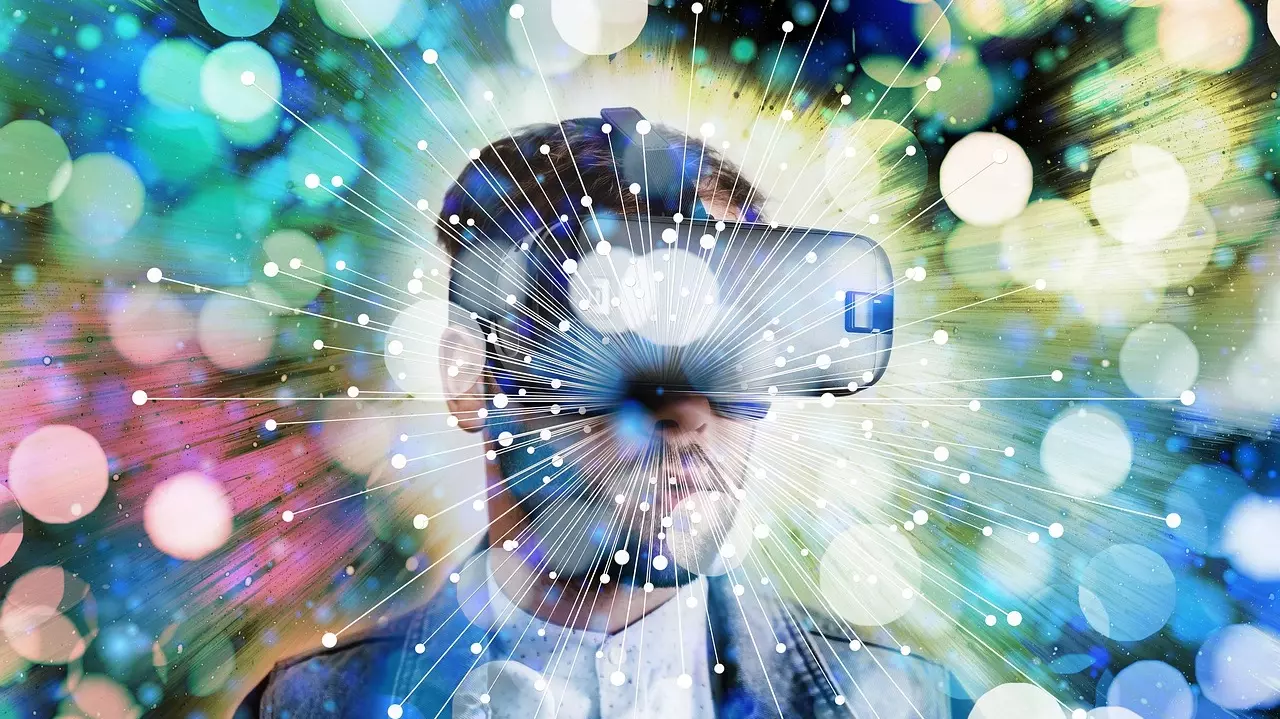
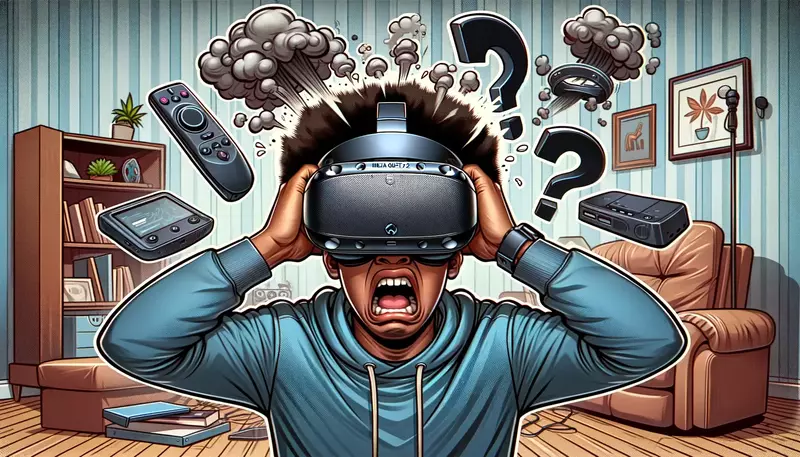
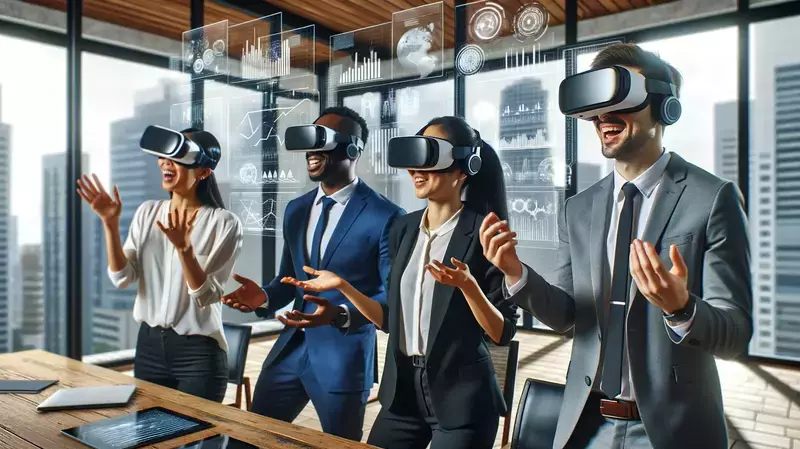
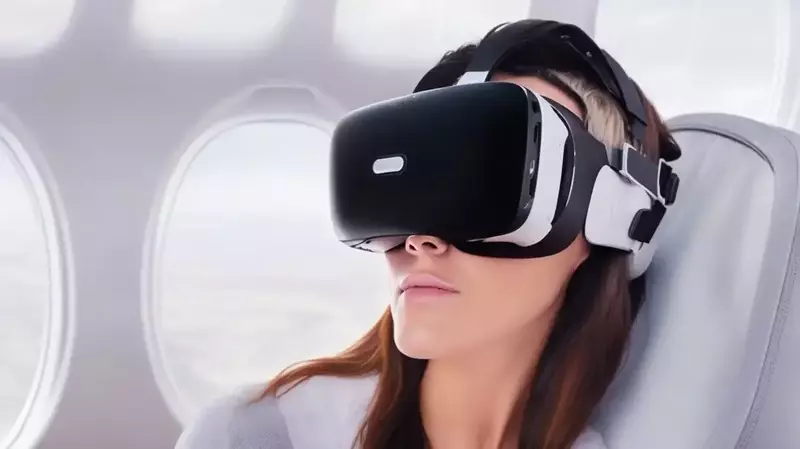
Leave a Reply